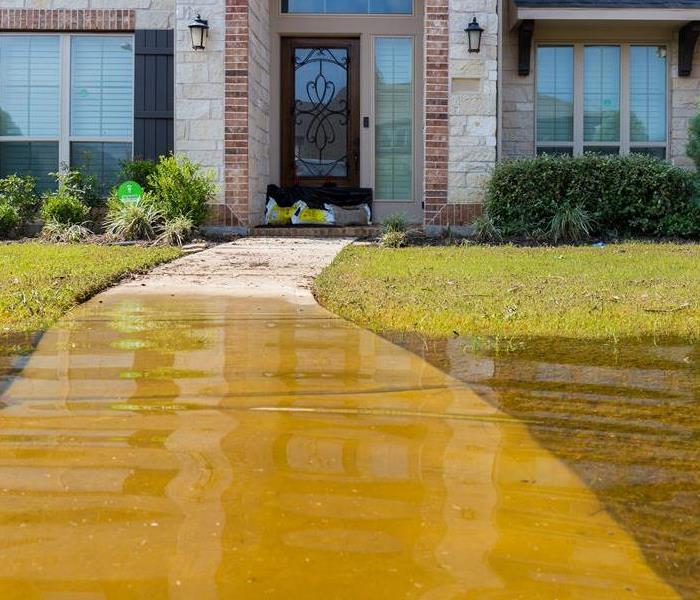Recovering Your Landscaping After Storms
9/28/2023 (Permalink)
 Recovering your landscaping after a storm is possible. Contact SERVPRO for professional assistance with recovering your landscaping properly.
Recovering your landscaping after a storm is possible. Contact SERVPRO for professional assistance with recovering your landscaping properly.
The South Central region is known for its beautiful landscapes, including lush gardens, towering trees, and manicured lawns. However, storms in the area can cause significant damage to your landscaping, leaving it in disarray and in need of recovery. In this blog post, we will discuss how to recover your landscaping after storms in the South Central region.
Assess the Damage
Before you begin any landscaping recovery efforts, it's essential to assess the damage caused by the storm. Inspect your property for any fallen trees or branches, damaged landscaping features, and eroded soil. Evaluate the structural integrity of any outdoor structures, like gazebos or pergolas, and check for any safety hazards.
Once you have assessed the damage, make a plan for recovery. Consider which tasks can be handled by yourself or your landscaping team and which require professional attention. Set reasonable goals and prioritize your efforts based on the severity of the damage. Make an inventory of any materials and equipment you will need and ensure you have everything required before you start.
Remove Debris
One of the first steps in landscaping recovery is to remove any debris accumulated in your lawn or garden. This may include fallen branches, damaged plant material, rocks, and other debris. Discard any damaged or dead plants as they are unlikely to recover and could spread disease to healthy plants. Remove any plant debris that is around the base of trees or shrubs to prevent fungal decay.
Storms can cause significant soil erosion, which can impact the health of your grass and plants. Rebuilding soil is an essential part of landscaping recovery. Consider adding a layer of compost or organic matter to help replenish nutrients and improve soil structure. This will also promote healthy plant growth, reduce soil compaction, and prevent future erosion.
Prune Trees and Shrubs
Strong winds and heavy rain can cause trees and shrubs to become overgrown or damaged. Pruning can help these plants recover and promote healthy growth. Regular pruning will help remove any damaged or diseased growth, improve air circulation, and keep your trees and shrubs healthy.
If any of your landscaping was significantly damaged, consider replacing it with new plants. Choose hardy, drought-tolerant species that can resist the harsh weather conditions of the South Central region. Be sure to plant new landscaping in well-draining soil with plenty of compost or fertilizer so that they can thrive.
Monitor Watering Carefully
After a storm, many homeowners want to help their plants recover by overwatering them. This can actually do more harm than good. When watering new or damaged plants, care must be taken to allow for adequate drainage. Before watering, check that the top few inches of soil are dry to avoid overwatering and check the weather forecast to avoid watering during rainy days.
If the damage to your landscaping is extensive, you may want to seek professional assistance. A landscape professional can help you assess the damage, diagnose any plant diseases or infestations, and provide advice on the best way to restore your landscaping. They can also provide critical tips on enhancing the landscape's resilience against future storms.
Recovering your landscaping after storm damage is possible. By assessing the damage, making a plan, removing debris, rebuilding soil, pruning trees and shrubs, planting new landscaping, monitoring watering, and seeking professional assistance, you can restore the beauty of your outdoor spaces. Landscaping recovery takes time, effort, and patience, but the resulting healthy and thriving landscape will be worth it.

 24/7 Emergency Service
24/7 Emergency Service